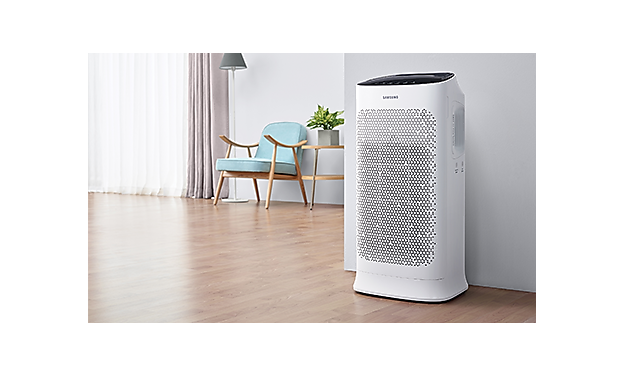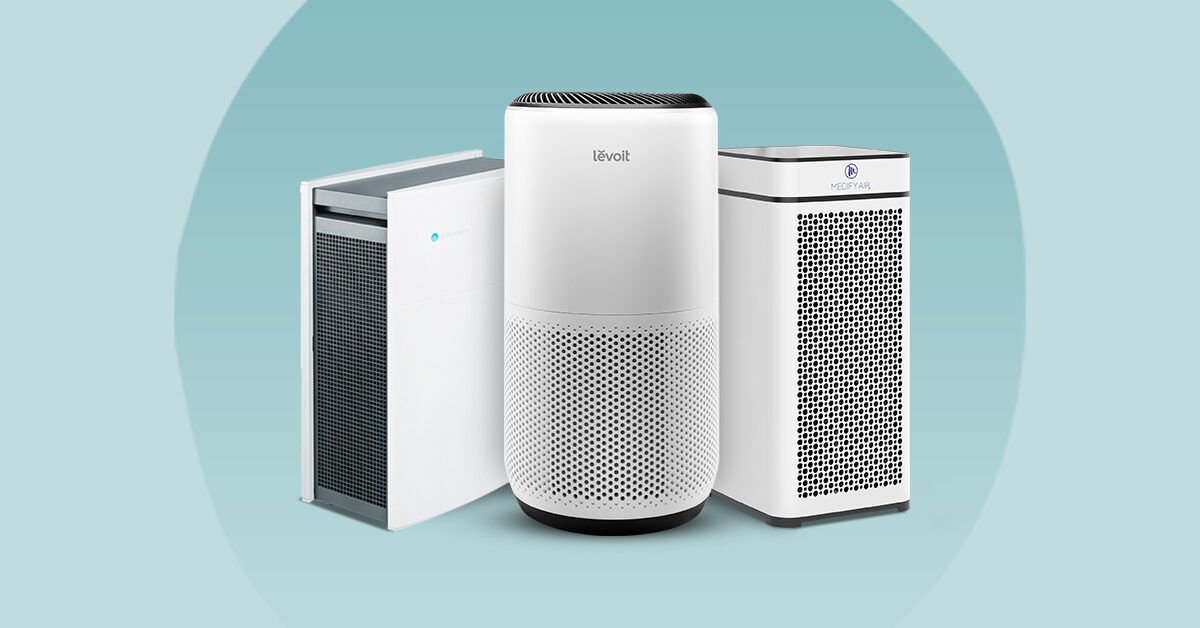Featured
Table of Contents
- – Understanding Mold And Mildew and Its Health ...
- – Can Air Purifiers Help Decrease Mold And Mildew?
- – The Science Behind Air Purifiers and Mold And...
- – Are Air Purifiers Right for You When Battling...
- – A Multi-Pronged Technique to Overcoming Mold
- – Living Mold-Free: Beyond Air Purifiers
- – When to Contact the Experts
- – Final Thought: A Breath of Fresh Air and a Mo...

Air purifiers are typically suggested as a solution, promising cleaner air and decreased direct exposure to mold and mildew spores. Are air cleansers absolutely worth it in the fight against mold and mildew?
Understanding Mold And Mildew and Its Health And Wellness Consequences
Before delving into air purifiers, let's shed light on mold and mildew and its possible health risks:
- Mold Essential: Mold and mildew is a fungus that thrives in moist environments. It replicates by releasing spores right into the air, which can be breathed in and cause different illness.
- Health Worries: Exposure to mold and mildew spores can activate allergy symptoms like sneezing, coughing, scratchy eyes, and a dripping nose. Sometimes, mold direct exposure can additionally bring about respiratory system infections and intensify existing breathing problems like asthma.
- Mold Doesn't Differentiate: While some individuals are extra sensitive to mold and mildew than others, any individual can experience illness from prolonged exposure.
Can Air Purifiers Help Decrease Mold And Mildew?
Air cleansers can contribute in taking care of mold and mildew, but it is necessary to recognize their restrictions:

- Capturing Spores: Air purifiers with HEPA filters can properly catch mold spores circulating airborne. This can help reduce direct exposure and possibly relieve allergic reaction signs and symptoms.
- Limited Influence On Resource: Air cleansers do not eliminate the resource of the mold issue. Mold removal is essential to deal with the origin and protect against additional development.
- Moisture Control is Key: Mold and mildew prospers in damp atmospheres. Air purifiers do not deal with dampness concerns. Without resolving the underlying wetness problem, mold will likely return.
The Science Behind Air Purifiers and Mold And Mildew
While air purifiers can't eliminate mold itself, some research study recommends they can be a handy device in taking care of mold exposure:
- A 2012 research study released in the journal "Building and Atmosphere" located that air purifiers with HEPA filters dramatically decreased air-borne mold and mildew spore focus in a test setting.
- A 2015 evaluation released in the journal "Current Allergy and Bronchial asthma Reports" ended that air cleansers, alongside other mold and mildew removal strategies, can be helpful in lowering mold-related symptoms in sensitive individuals.
Nonetheless, it's crucial to note some restrictions:
- HEPA Filter Effectiveness: HEPA filters are not 100% effective at catching all mold spores, particularly extremely little ones.
- Filter Upkeep: Regularly replacing HEPA filters according to the manufacturer's instructions is crucial for keeping ideal performance. Clogged filters lose efficiency.
Are Air Purifiers Right for You When Battling Mold and mildew? Factors to Take Into Consideration
Below are some essential variables to take into consideration when choosing if an air purifier deserves it for your mold and mildew scenario:
- Severity of Mold And Mildew Growth: For small mold patches, addressing the dampness resource and eliminating the mold could be enough. Air purifiers may be much less crucial. For comprehensive mold and mildew development, an air purifier can be a useful enhancement to your removal method.
- Wellness Problems: If you experience allergy signs and symptoms or respiratory problems thought to be mold-related, an air purifier can provide some alleviation and improve indoor air quality.
- Dealing with the Source: Bear in mind, air cleansers are not a substitute for correct mold and mildew remediation. Identifying and resolving the resource of dampness that's causing the mold development is necessary for a long-term service.
A Multi-Pronged Technique to Overcoming Mold
While air cleansers can be a practical device, an extensive strategy is essential to winning the fight against mold:
- Moisture Control: The most important action is to identify and attend to the resource of dampness that's allowing mold and mildew to grow. This could include repairing dripping pipelines, improving ventilation in shower rooms and kitchens, or attending to condensation problems.
- Mold and mildew Removal: Professionals advise expert mold and mildew remediation for considerable mold development. They have the expertise and equipment to securely get rid of mold and mildew and stop more spread. For tiny mold and mildew patches, you might be able to handle elimination on your own, adhering to security guidelines.
- HEPA-Filtered Vacuuming: After mold and mildew remediation, HEPA-filtered vacuuming can help remove staying mold spores from surface areas.
- Air Purifier Assimilation: Once the source of the mold and mildew is resolved and the mold and mildew itself is eliminated, an air purifier can be a valuable device to catch staying airborne spores and improve indoor air high quality.
Living Mold-Free: Beyond Air Purifiers
Below are some additional tips to advertise a mold-free environment:
- Maintain Low Indoor Moisture: Go for a humidity degree in between 30% and 50% making use of a dehumidifier in damp climates. This aids protect against mold development.
- Increase Air Flow: Enhance air flow in your home by opening home windows regularly and making use of exhaust followers in washrooms and kitchens.
- Tidy and Dry Damp Surfaces: Quickly tidy and completely dry any kind of damp surface areas, such as spills or condensation, to avoid mold and mildew from taking root.
- On A Regular Basis Examine Prone Areas: Take note of areas susceptible to mold and mildew growth, like restrooms, cellars, and attic rooms. Regularly inspect for indicators of mold and mildew and address dampness problems immediately.
- Think About Mold-Resistant Materials: When renovating or replacing building products, think about making use of mold-resistant alternatives, particularly in moisture-prone areas.
When to Contact the Experts
While some mold removal jobs can be dealt with by yourself for small mold spots, there are situations where professional aid is crucial:
- Substantial Mold And Mildew Development: If you uncover a big area of mold and mildew growth, particularly if it covers greater than 10 square feet, it's best to hire a professional mold and mildew removal business. They have the experience and equipment to safely remove the mold and mildew and avoid further spread.
- Wellness Problems: If you or your member of the family experience consistent respiratory system issues or allergy signs and symptoms suspected to be mold-related, seeking advice from a medical care specialist and a mold remediation professional is advised.
- Concealed Mold: If you think mold growth behind wall surfaces or in crawlspaces, professional help is necessary to find and remove the mold safely and properly.
Final Thought: A Breath of Fresh Air and a Mold-Free Home
Mold development in your house can be a concerning problem, but with the best approach, you can win the fight and create a healthier living environment. While air purifiers can be a helpful tool in handling mold direct exposure, remember they are not a standalone remedy. By dealing with the resource of dampness, implementing appropriate mold and mildew removal approaches, and integrating preventative procedures, you can take a breath less complicated in a mold-free home.
Additional Considerations:
- Air Top Quality Testing: For extreme mold issues or if you have health and wellness problems, consider expert air high quality screening to analyze mold and mildew spore degrees and guide your remediation efforts.
- Long-Term Tracking: After successful mold and mildew remediation, it's sensible to monitor your home for indications of recurrence, especially in areas previously vulnerable to mold development.
By taking a proactive strategy and integrating these approaches, you can produce a healthy and balanced and mold-free setting for yourself and your family members.
Table of Contents
- – Understanding Mold And Mildew and Its Health ...
- – Can Air Purifiers Help Decrease Mold And Mildew?
- – The Science Behind Air Purifiers and Mold And...
- – Are Air Purifiers Right for You When Battling...
- – A Multi-Pronged Technique to Overcoming Mold
- – Living Mold-Free: Beyond Air Purifiers
- – When to Contact the Experts
- – Final Thought: A Breath of Fresh Air and a Mo...
Latest Posts
Rumored Buzz on Is It Safe To Put Yeti Ramblers In The Dishwasher?
About Can Yeti Ramblers Handle Dishwasher Cleaning?
Fighting the Mold And Mildew Hazard: Are Air Purifiers Well Worth It?
More
Latest Posts
Rumored Buzz on Is It Safe To Put Yeti Ramblers In The Dishwasher?
About Can Yeti Ramblers Handle Dishwasher Cleaning?
Fighting the Mold And Mildew Hazard: Are Air Purifiers Well Worth It?